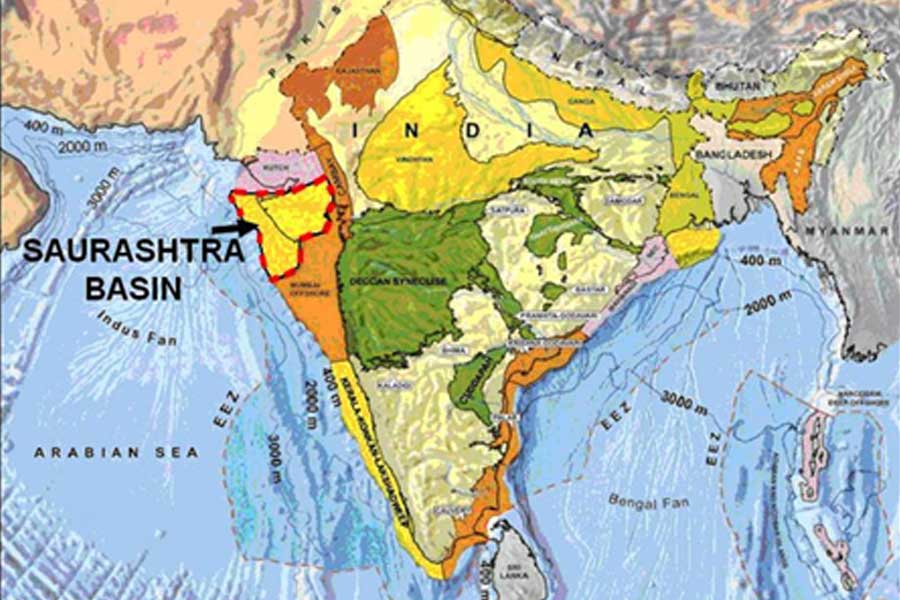The Saurashtra Basin, which is spread across the coastline of western Gujarat and north of Mumbai, was formed by the separation of India from Madagascar about 100 million years ago, as per the findings of an ongoing study.
This study of the sediments of the Saurashtra Basin is being conducted by the Indian Institute of Technology (IIT) Bombay jointly with Thiruvananthapuram-based National Centre for Earth Science Studies (NCESS) to get insights into the region's paleogeography.
Paleogeography is a historical study that tells us what the parts of the earth looked like in the past.
The study aims to explore the minerals of the basin further to improve the understanding of the geological history of the region.
The Saurashtra Basin, is in the coastline of the western Gujarat and the north of Mumbai, which is spread over 2,40,000 sq km, spanning sea and land. Much of the landscape here remains buried in volcanic rocks called Deccan Traps, created by volcanic eruptions at the Western Ghats during the Cretaceous period, 66 million years ago, the study said.
However, the sediment beneath the volcanic ash and rocks hides the journey of the Indian sub-continent over the millennia, it said.
"Saurashtra Basin was formed by the separation of India from Madagascar about 100 million years ago. Before the separation, India, Madagascar and the Seychelles were joined together. After the separation, the western margin of India became lowlands, while the north and north-eastern parts of the study area acted as highlands," Dr Pawan Kumar Rajak from the IIT Bombay's Department of Earth Sciences, and the lead author of the study, said on Wednesday.
The Saurashtra Basin, along with nearby basins like Cambay, Kutch and Narmada, forms a part of India's western margins, which have been identified as potential sites for hydrocarbon resources.
Knowing the origin of these sediments can, therefore, assist in exploration efforts and better management of these resources.
"The next plan is to work in the same area to refine our understanding of the source areas and paleogeographic changes of that time. We must check whether the sediments were also sourced from Madagascar and Seychelles," Santanu Banerjee, professor at the Department of Earth Sciences at IIT Bombay, said.
"We plan to contact the Oil and Natural Gas Corporation (ONGC) to get seismic data for the study area to determine the basin configuration and trace sediments across the Arabian Sea," he said.
The study also found paleo-drainage patterns in ancient river systems, which are crucial for understanding how landscapes evolved and reshaped over time due to geological forces.
In future, these findings could shed light on the paths of ancient river systems, the study added.
Except for the headline, this story has not been edited by The Telegraph Online staff and has been published from a syndicated feed.











